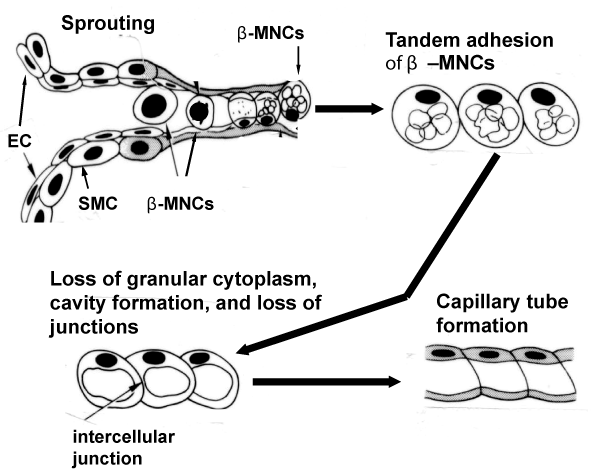
 |
| Figure 7: Schematic depiction of the process of capillary tube formation by β-MNCs in the ischemic myocardium. Circulating β-MNCs are recruited to a specific portion of a pre-existing vessel and initiate sprouting. Other β-MNCs then migrate through the vessel thus created into the interstitial space and adhere to each other in tandem. An intracellular cavity is formed in each cell by the loss of β-actin-positive granular cytoplasm. Intercellular junctions disappear and cavities connect with each other forming a capillary tube. New β-MNCs are recruited to the end of the newly formed capillary tube, migrate outside and adhere to each other in tandem. This process is repeated to extend the tube. |